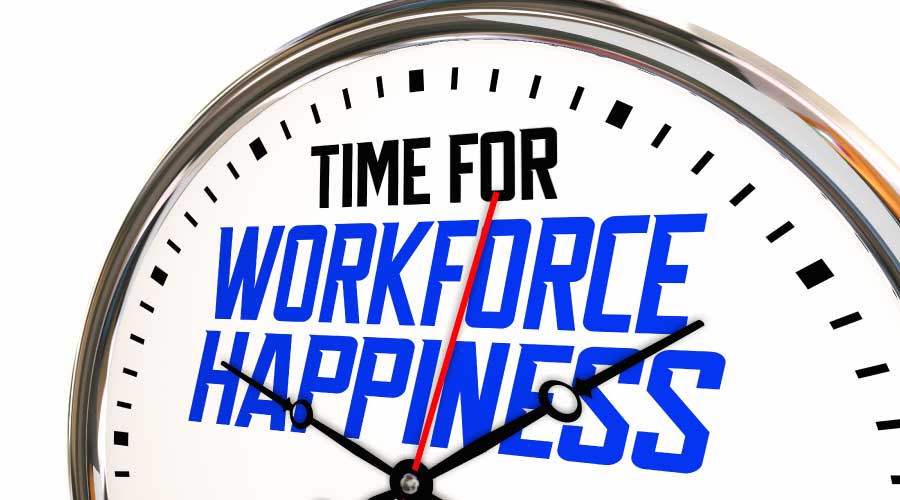How to Develop In-House Product Standards
Expert facilities managers give their best advice on the best practices for developing specifications for products that offer longest life, best performance, and at a reasonable cost.
Developing in-house product standards is a challenge that most facility managers tackle at some point. Whether it’s furniture or flooring or lighting or HVAC, in-house standards must be flexible enough to cover a wide range of products to allow for plenty of options at different price points, but they also must be specific and stringent enough to give facility managers clear criteria for selecting products. Facility managers must decide how to develop the standards, what criteria to use, and how cost and performance are balanced with other factors.
In-house standards offer a big benefit, especially for large organizations: Inventory control. For example, a big university might have hundreds of drinking fountains. “You want to have spare parts available to fix them quickly,” says Peter Strazdas, associate vice president of facilities management at Western Michigan University. But the more that an organization has installed drinking fountains from different manufacturers, the bigger the inventory of spare parts it needs. “It comes down to the economics of how much product you need in your central store area,” he says, noting that there’s plenty of pressure not to have too much cash tied up in inventory.
Christopher Walinski, building operations manager for Munich Reinsurance America, agrees: “If I have a standard, I don’t need to keep other parts and replacements in my catalog. I can keep one type.”
Nevertheless, attempts to develop in-house product standards may run into opposition. The problem is that those standards may raise first costs because of single-source bidding on certain products. This can raise red flags on the capital planning side of the house.
The way to resolve that conflict is to pay attention to life cycle costs. “We all win if we say it’s the best longest life cycle,” Strazdas says. “So instead of the right hand and left hand hitting each other, they’re doing a high five with each other. It’s a win-win.”
Developing in-house standards
When developing in-house product standards, it helps to have a rationale, not just aesthetics, behind the decision-making, says Walinski. Once that rationale is known, the rest is tied to the philosophy of the company, he says.
Munich Reinsurance America considers five areas: efficiency, sustainability, health and wellness, aesthetics, and budget.
“We want to make sure the product we pick complements the look we want, is within budget, and meets the other three (factors),” Walinski says. For example, any device that uses energy must be efficient. The company has LEED Platinum and Gold certified buildings, so it doesn’t want to do anything to jeopardize those ratings, Walinski says.
Western Michigan University developed its in-house standards by bringing together people, ideally between capital projects when there was a lull, Strazdas says. Total cost of ownership is a priority at the school, which means low construction costs at the outset and knowing how long a product such as a chiller or carpet will last. It’s a compromise between the construction team and the operations team, Strazdas says, a “middle road scenario” where both sides have looked at all the possibilities. “It’s utopia where both work together, finding the best of both worlds,” he says.
New products shouldn’t be overlooked in some situations, even if a current product has been working well for 20 years, Strazdas says. Facility managers need to be a little flexible in their standards, allowing for a product to be evaluated and specified, he says.
When writing standards for product specifications, the Constructions Specifications Institute is a good resource, Strazdas added.
Making the right choices
Scott Offermann, managing director, critical environments of global occupier services for Cushman & Wakefield, says there are two methodologies for standardizing in-house specifications for durable products and equipment: One is to write loose specifications, put the product out to bid, and select the lowest priced product that meets the specifications. The other way is to select a product based on an organization’s requirements and go with that brand throughout the organization. He prefers the latter.
“The benefit of doing it that way is that all your parts and spare parts are interchangeable on products, whether it’s lighting or HVAC,” Offermann says. “If you’re dealing with multiple offices and locations, you can move things back and forth and they have a common look.”
Determining which product is right for an organization depends on the industry and the company, Offermann says. For example, if facility managers have an office building with 50 offices, it could be that the same modular furniture and lighting is fine for all of them. That’s unlikely to be the case, however, if the organization is in the healthcare industry. The emergency room is going to be very different from the waiting room of a plastic surgeon, Offermann says.
Location also plays a role. If a company has offices in several countries, having the same furniture may not matter because getting it across the border could be a problem, Offermann says. In that case, the specific model and manufacturer are less important than having similar size, color, and function.
“One other thing to consider is you have to make sure what you’re picking fits your need but also the image of the organization you’re representing,” Offermann says. “I can stay in a Comfort Inn or a JW Marriott. The furniture has the same function but it looks very different. The price points are different.”
While creating an in-house standard offers important benefits, it’s not the whole story. As new and improved products come out, the in-house standard is at risk of falling behind the times. When he goes out to buy a product, Walinski asks whether there’s anything new that he should consider. “Having standards is a great foundation and then knowing how your standards compare to new ideas is a great way to finish,” Walinski says.
Desiree J. Hanford, a contributing editor for Building Operating Management, is a freelance writer who spent 10 years as a reporter for Dow Jones. She is a former assistant editor of Building Operating Management.
Email comments and questions to edward.sullivan@tradepress.com.
Related Topics:












